
Content Writer
Is your marketing team in the need of an editorial calendar?
Content creation and content distribution are important components of any marketing plan. However, to make the best out of your content strategy, the trick is to stay organized.
If so far, keeping multiple tabs, writing ideas down in Google Sheets, or putting everything together on a few post-its has been your go-to, then the answer might be yes, your business needs an editorial calendar.
Once you have your marketing plan ready, it’s time to work on your own editorial calendar that will add structure to your planned initiatives. Editorial content is essential for content production, and knowing the what and why behind a content calendar can help your business (and not just content creators) get closer to its marketing goals.
So, let’s dive in.
Plan your content strategy effortlessly across multiple marketing channels.
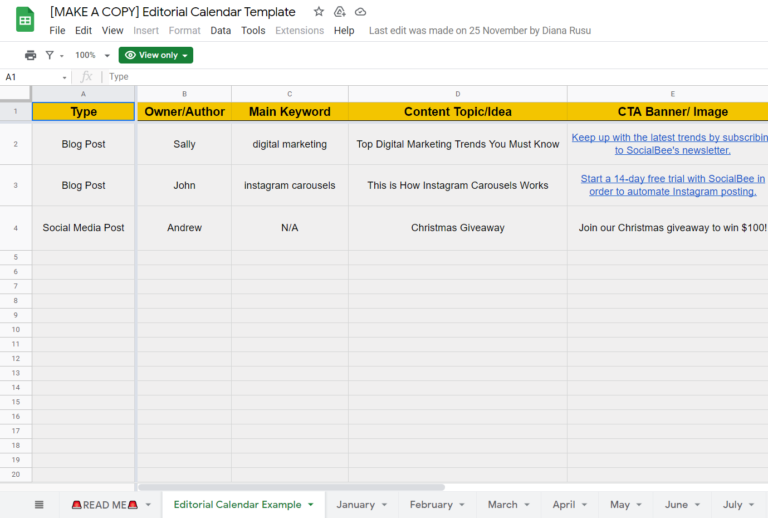
What Is an Editorial Calendar?
An editorial calendar is a document that allows content creators to plan and manage the entire content planning process. It contains, but is not limited to, details such as topics, themes, and important dates that concern your business for a longer time.
Editorial calendars are a great fit for social media managers, big marketing teams, and content creators looking for ways to improve their publishing workflow.
There are three main aspects you have to establish before creating an editorial calendar:
- How frequent you’ll be publishing content
- What types of content you’ll be producing
- Which tools or format you’ll be working with
What’s important to keep in mind is that an editorial calendar is not the same as a content calendar.
Let’s find out why a content calendar is different:
What Is the Difference Between an Editorial Calendar and a Content Calendar?
An editorial calendar delivers a monthly, quarterly, or yearly overview of a brand’s content marketing strategy, while a content calendar contains all the day-to-day details that go into the content creation process.
Even though these terms might have often been used to refer to the same thing, it’s important to know that they’re both used for different goals.
An editorial calendar will allow you to establish themes for your content, make sure your tone of voice is always on-brand, and design your content strategy by looking at the big picture.
On the other hand, a content calendar will help you share content according to a publishing schedule, and this can mean on a daily, weekly, or even monthly basis. With the help of a content calendar, you can track the blog posts published throughout a specific time frame.
Using a content calendar gives content creators the chance to better organize upcoming content and build more effective marketing campaigns and overall improve their marketing strategy.
We have some good news for you, and it involves social media content planning. To help you keep track of your social media posts, we created a free content calendar template you can access below and customize it for your business.
Boost your content creation with hundreds of post ideas, examples and Canva templates.
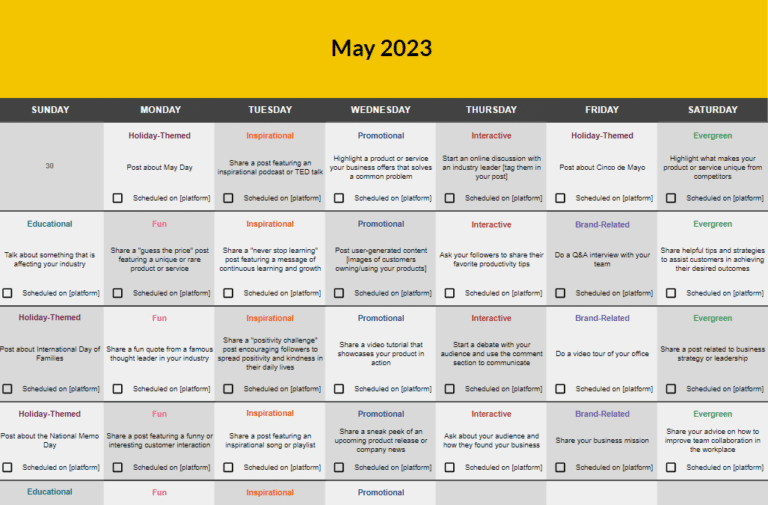
Benefits of an Editorial Calendar
Now that we’ve gone through the definition of an editorial calendar and the differences that set it apart from a content calendar, it’s time to discover why is it so important for your marketing strategy.
Here are the benefits of an editorial calendar:
- It keeps your work organized
- Allows you to focus on strategic planning
- Makes it easy to come up with quality content ideas
1. Keep Your Work Organized
Editorial calendars can help you stay organized from more than just one perspective. They can keep all your ideas in one place, and give you a good estimate of the due publication dates.
You can also centralize the status of your content – be it pending approval, in progress, or due in a few days.
2. Focus on Strategic Planning
Your story ideas can also find their place in editorial calendars. You can keep track of the themes you want to cover in your future content, as well as the team members working on it and any key dates for your content.
3. Come Up with Quality Content
Knowing exactly what needs to be done and when can give you more time for content production. An editorial calendar can take away the worries of missed deadlines or workflow issues, and help you repurpose your existing content and the creation of new relevant content.
Editorial Calendar Format
Here are the main three editorial calendar formats:
- Printed calendar or a Google Calendar
- Spreadsheet calendar
- The calendar within a project management tool
1. Traditional: Printed Calendar or Google Calendar
Keeping track of your deadlines or planning your day can be done traditionally: choosing a printed calendar you keep on your desk or having a Google Calendar shared with the entire team.
It’s an easy way to know what’s happening where and when, but there’s one element to take into consideration. That is that traditional calendars might not be as effective when you need to track more than just the publishing date of an article.
2. Spreadsheet with Multiple Sheets
A spreadsheet is another editorial calendar format example.
You can take advantage of Google Sheets or Microsoft Excel to put together your calendar and make them available to your whole team so that everybody is on the same page.
Spreadsheets can also be imported to monthly calendars, so you can have visibility over your tasks.
3. Project Management Tool
Project management tools are great for content producers, project managers, and many others.
You can use these tools for editorial management too, as they offer an automated version for anything you can think about. Be it from keeping everything organized and better collaboration with your team, to integrating with different tools.
You can use ClickUp as your go-to project management tool and manage everything on only one platform.
What Should Be Included in an Editorial Calendar?
How your editorial calendar will look depends on the complexity of your content plan. Thus, the key elements to be included will differ.
The following elements could be included in your editorial calendar:
- The themes or topics that will be covered
- The keywords that are attached to the themes/topics you’re covering
- Any call to action you might want to include in your content
- Working titles and subtitles (even if they’re just a work in progress)
- The due dates for the content
- Publishing cadence (mention if it’s monthly or weekly)
- Any other important dates such as editing dates or publishing dates
- Social media or other significant channels for content distribution
- The type of content (videos, images, blog posts)
- Details regarding ownership (to whom is the task assigned)
- Notes (links, what to include or not include, any specific tools to talk about)
However, it’s important to acknowledge that not all the elements in this list will become a part of your editorial calendar. Make sure you select the ones that work best for your business, for your team members to work simply and efficiently.
What Should NOT Be Included in an Editorial Calendar?
There aren’t any exact pain points to add to the “Not like this” category of an editorial calendar. What’s vital to understand is that any element that doesn’t help you and your team should be removed.
Keeping your editorial calendar simple and organized will bring your better results than one that is crowded with useless information.
So, if a detail such as the publishing cadence doesn’t bring you any benefit, feel free to replace it.
How to Build Your Editorial Calendar in 10 Steps
Wondering how to build your editorial calendar, but not sure where to start? No worries, as we’ve got you covered.
Here is how to build your editorial calendar in 10 steps:
- Map out your current editorial process
- Decide on a publishing workflow
- Establish your publishing frequency
- Generate content ideas for your blog posts
- Outline your content strategy
- Schedule your first 3 months
- Start creating content
- Publish your content
- Prioritize your content backlog
- Optimize your process
Now that we’ve seen the list, let’s see how you can create an editorial calendar in more detail:
1. Map Out Your Current Editorial Process
The first element you need to consider when you create an editorial calendar is the mapping of your current editorial process.
Let’s face it, sometimes the processes we have in place work accordingly, while sometimes they don’t. And a process that doesn’t work is not something a business wants.
So, how do you figure out what’s working in your current editorial process?
Well, you can:
- Discuss the current process with your team — the stages involved, and the steps that are taken.
- Find out the key members and activities involved in your current process.
- Discover what is working, and what is bringing difficulties to your team.
- Identify the areas that need improvement and act on them.
These are some of the best starting points to map out your editorial process. Once you’ve analyzed your current editorial process and come up with some solutions, it’s time to move to the next steps in your content marketing strategy.
2. Decide on a Publishing Workflow
Publishing something doesn’t just happen. It requires a set of clearly defined steps to achieve a final result – in this case, the publishing workflow.
What you need to do to make this work is:
- Figure out what steps are involved in the creation process — such as deciding on topics, finding the relevant keywords, setting deadlines.
- Assign the tasks to different team members — decide what member does what. For example, finding topics and keywords might be a part of the content writer’s job while setting deadlines could be a manager’s job
- Set a time expectation for completing the task — coming up with the relevant keywords might take 30 minutes, but the creation process might take up to a few days.
These steps can help you have a clear view of what and how it needs to be done.
3. Establish Your Publishing Frequency
How often is your upcoming content published? Is it multiple times a day, once a day, once a week, or is there another publishing frequency going on?
Establishing your publishing frequency can give you a better idea of how your editorial calendar will look like:
- Decide on how many blog posts you’ll have per week
- Determine how many social media posts you’ll have per day/per week.
- Choose how many emails you’ll send to your audience
For example, if you were to think of social media posting, you can use a social media management tool like SocialBee to track the number of posts you’re sharing per week.
SocialBee’s Schedule stats show you how much content you’re sharing weekly and how diverse it is.
Start a 14-day free trial with SocialBee to power up your posting!
4. Generate Content Ideas for Your Blog Posts
Knowing how much you have to publish from the perspective of social media posts and blog posts is great. However, knowing what to publish is just as great and also important. Start by identifying what your audience is interested in and then find the best ideas for your blog calendar.
This could involve Internet searching, asking your audience, using media monitoring tools, and more. Make sure you check our article about blog post ideas, to get inspired.
5. Outline Your Content Strategy
There are a few questions to answer when it comes to your content strategy. If you’re wondering what’s necessary to write relevant content, here’s a set of questions to answer:
- Who is my target audience?
- What are my content formats?
- What are my preferred social channels?
- What solutions do I provide my audience with?
- How is my product different from others?
All these answers will give you a clearer view of how your content should be constructed to fill in any content gaps and catch the attention of your audience.
6. Schedule Your First 3 Months
Creating a blog post or even social posts shouldn’t be an action that’s done in a few hours or last-minute. Scheduling your first three months can help you get a better idea of the big picture and get a better idea of what you have to do.
You can add to your editorial calendar details such as:
- When the briefs are provided
- When the process of assigning tasks should happen
- When you should track content changes
- When the content should be posted
Having an exact date for each action can give you a better and more stress-free perspective of what’s going on with your process.
7. Start Creating Content
Planning content is great, but you also need to create it, and that’s where it might become tricker.
What you should have in place to get started on the creative process is a list of ideas to start from. This can mean anything from a few keywords that could spark the ideas or a working title.
Have the process outlined in an organized manner: the keyword research is a task assigned to one of your team members, while the actual writing process is done by another one of your team members.
Not sure where to start? Check out SocialBee’s Concierge Services and get your content creation process in check in no time.
8. Publish Your Content
Be it visual content or any other type of content, it’s time for your final product to reach your audience.
Let’s say you’ve just published a new blog post and you want to share it with your audience on multiple social media channels. One post on Facebook, one post on Instagram, one more on LinkedIn, and you’ve just found yourself facing three more tasks to deal with.
Publishing your content doesn’t have to be a manual and tedious task, though, and we’ll tell you why. You can schedule your social media posts with the help of SocialBee on any network.
You can add your social posts to SocialBee’s Content Calendar and have them shared on your social media feeds.
Start a 14-day free trial with SocialBee to publish content consistently!
Set it and forget it, all while working on your next piece of content.
9. Prioritize Your Content Backlog
Some creative ideas will come to life and maybe become a blog post, while others won’t.
However, just because an idea won’t make it into one of your content topics just yet, it shouldn’t be ignored.
You can start by creating a sheet that contains all the content topics you’re considering. You can add any helpful details, such as:
- Title and keywords
- Team members involved
- Deadlines
- Progress
10. Optimize Your Process
No process is perfect —- be it writing, editorial, or production process.
However, knowing whether it’s time to optimize your processes can help your business save money, time, and stress. Here’s what you should find out:
- The processes in place take more time than expected.
- The steps included in those processes are simple and easy to apply.
- There are many errors or misunderstandings involved.
- Your marketing objectives are in line with the current processes.
- Your current processes require automation or a review.
These are just a few examples of how you can optimize your current processes. Depending on your business and team size, there might be more questions you’d have to take a look at.
Editorial Calendar Example
If you’re looking for an editorial calendar example, look no further.
We have created an editorial calendar template ready for download that includes some key details to get you started, such as the due date, the author of the resource, keywords, content ideas, and many more.
This example can help you lay the foundation for your editorial calendar and give you a strong head start for a better organization.
Now you can stop looking for editorial calendar templates. Download the our editable editorial calendar below, to start managing your content with ease.
Plan your content strategy effortlessly across multiple marketing channels.

Tools to Use for a Successful Editorial Process
1. Content Distribution – SocialBee
Even if you have published your blog posts according to your editorial calendar, it doesn’t stop here—you have to develop a social media strategy that will bring more readers and boost your website traffic.
It’s time you promote your blog posts on social media, and what better way to do that than through SocialBee?
With SocialBee, you can take advantage of the following features for your content distribution:
- Use content categories (content category for blog posts)
- Recycle evergreen content/ expire time-sensitive posts
- Use link previews or images for your sm posts about blog posts
- Customize each post for different social media networks
- Set a posting schedule that you can rely on at all times
Pair it up with Canva, to create visual content that will get shared on different platforms that will catch the eye of your audience.
Not only that, but Canva offers numerous templates you can use to create the perfect visual design for your content, with easy functionality.

SocialBee: Your AI-powered social media management tool
2. Project Management – ClickUp
A busy workday can stem from both the calendar and the number of tasks one has to deal with. However, a project management tool can help you keep all the tasks in one place.
ClickUp is a project management software that provides an effort-free way of managing your business and your team. You can track the progress of your team, all while organizing the rest of your tasks.
3. Content Creation – Ahrefs & the Hemingway App
Content creation is more than just adding some random words to a few Google Docs. In order to ensure that your content makes sense and that you’re on the right track, some tools are necessary to put together your content efficiently.
And this brings us to finding the right keywords.
Ahrefs
Creating your content and driving more traffic through it relies on the use of keywords. Ahrefs is a great tool for keyword research, as the SEO tool can give you keyword ideas and a traffic estimate for those keywords.
Content marketers are also aware that the readability of your text will also have an impact on the performance of your business.
Hemingway App
Hemingway App is your “go-to” tool when you’re not sure of how your text sounds. It provides you insight into the structure and grammar of your text, so your text becomes easy to read and understand.
FAQs About Editorial Calendars
1. What Is an Editorial Calendar Plugin?
An editorial calendar plugin offers a calendar view that shows you all the upcoming posts (not just the published ones) in one place.
2. Who Uses Editorial Calendars?
These calendars are most often used by freelancers, content creators, bloggers, digital marketers, or any person who creates content.
3. What Format Is Best for Small Businesses: Apps or Spreadsheets?
Apps would be more recommended for a small business, as they offer some automation features that are not available in a simple spreadsheet.
4. What Content Can I Put on an Editorial Calendar?
You can add anything from blog posts or articles to videos and social media content. There’s also no limitation to how much content you can add to your editorial content.
5. How to Build an Editorial Calendar While on a Budget?
If your current content plan doesn’t involve posting various pieces of content on multiple platforms, the most budget-friendly solution would involve creating a simple spreadsheet. However, make sure you share it with all your team members.
Final Thoughts on an Editorial Calendar
Using an editorial calendar isn’t necessarily tied to a set of “do’s and don’ts” that applies to all businesses. It’s true that what works for a business might not work for another, but it represents a great starting point for a more organized workflow.
You can opt for as little as a spreadsheet, or move even towards more advanced tools, to automate your work. It’s all going to depend on your business needs and the size of your team though.
We’ve put together an editorial calendar template for you to use and kick-start your content journey. Make sure you download it and put it to good use, alongside your team, of course.
Plan your content strategy effortlessly across multiple marketing channels.

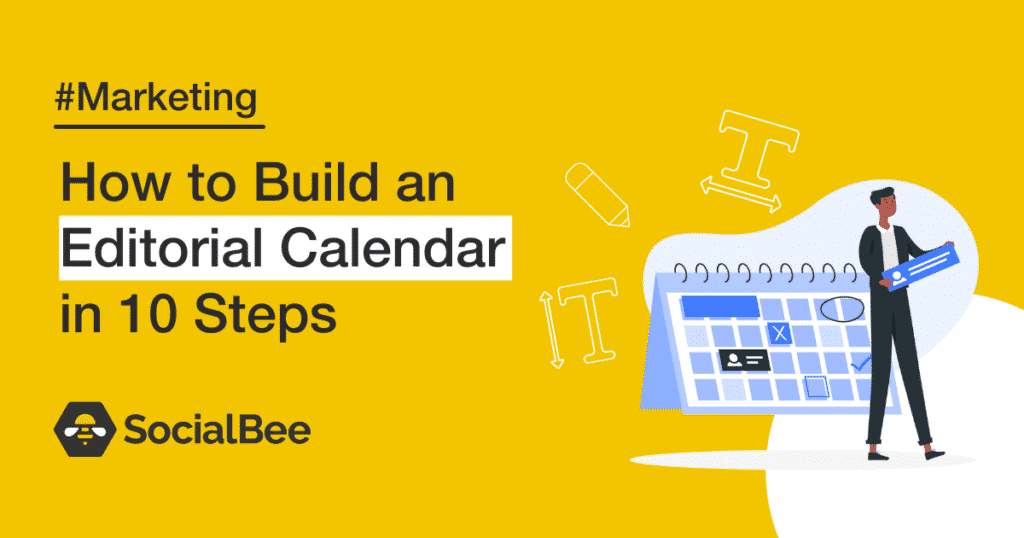
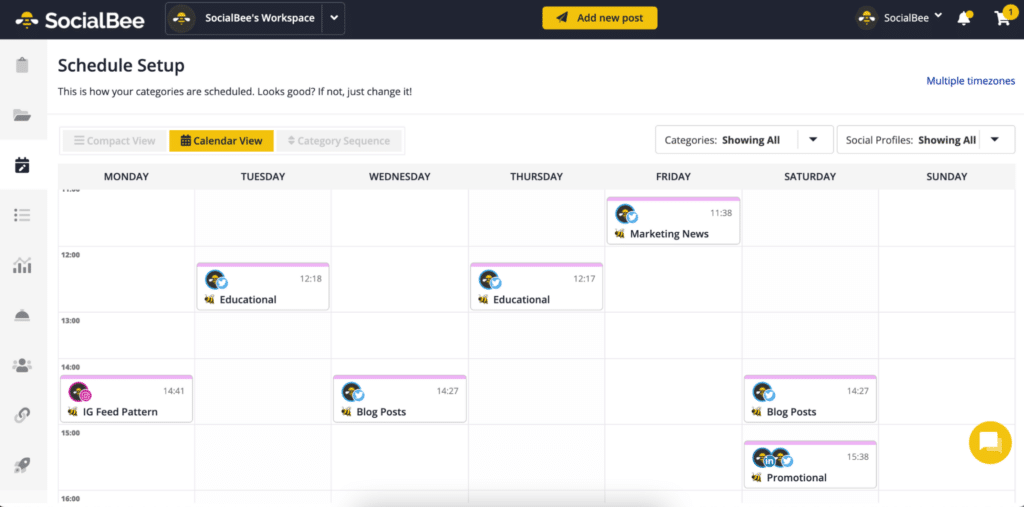
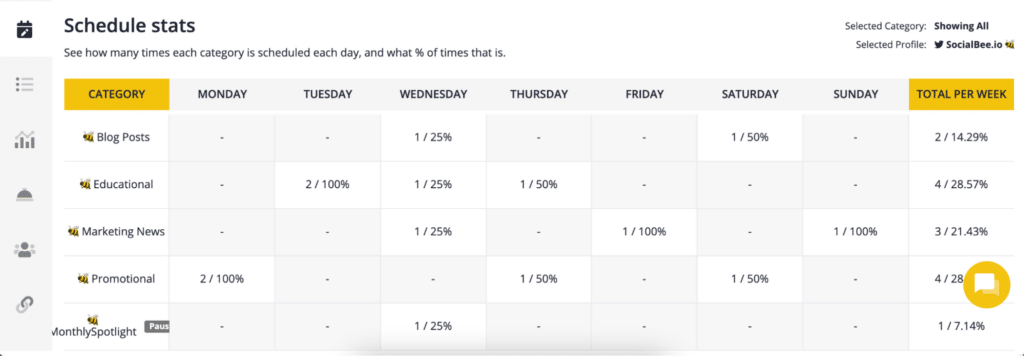

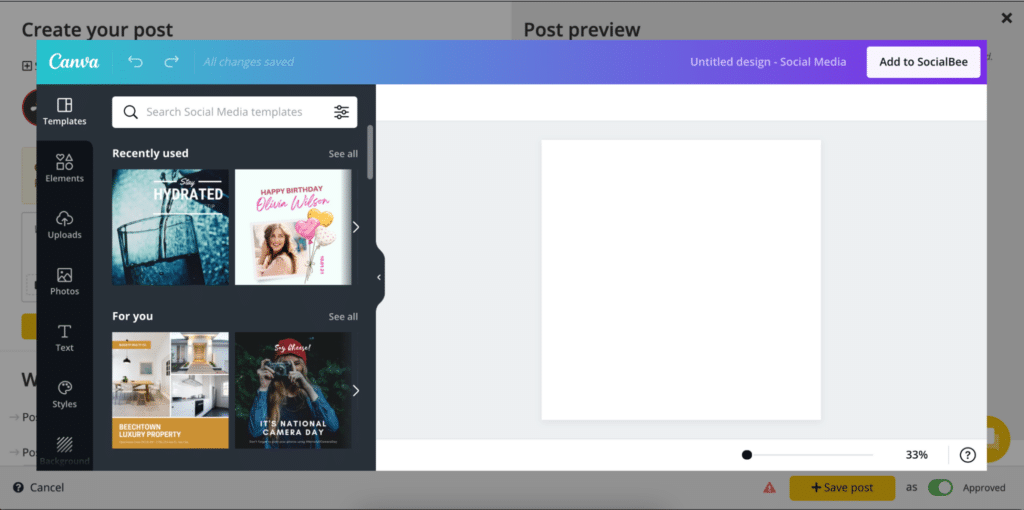




 Customizable tone of voice
Customizable tone of voice  Several variations to choose from
Several variations to choose from  1,000 pre-made AI prompts
1,000 pre-made AI prompts